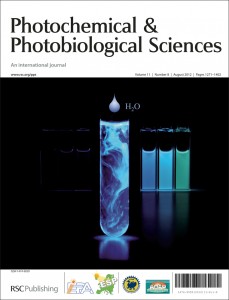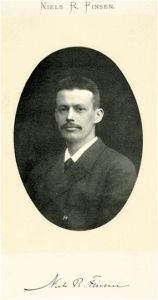This month sees the following articles in PPS that are in the top ten most accessed:-
Controlled surface trap state photoluminescence from CdS QDs impregnated in poly(methyl methacrylate)
Santanu Karan, Manisree Majumder and Biswanath Mallik
Photochem. Photobiol. Sci., 2012,11, 1220-1232, DOI: 10.1039/C2PP25023C, Paper
On the genesis of heterogeneous photocatalysis: a brief historical perspective in the period 1910 to the mid-1980s
N. Serpone, A. V. Emeline, S. Horikoshi, V. N. Kuznetsov and V. K. Ryabchuk
Photochem. Photobiol. Sci., 2012, Advance Article, DOI: 10.1039/C2PP25026H
Synthesis, photophysical, photochemical, DNA cleavage/binding and cytotoxic properties of pyrene oxime ester conjugates
Nilanjana Chowdhury, Sansa Dutta, Swagata Dasgupta, N. D. Pradeep Singh, Mithu Baidya and S. K. Ghosh
Photochem. Photobiol. Sci., 2012,11, 1239-1250, DOI: 10.1039/C2PP25033K, Paper
Photo-oxidation of proteins
David I. Pattison, Aldwin Suryo Rahmanto and Michael J. Davies
Photochem. Photobiol. Sci., 2011, Advance Article, DOI: 10.1039/C1PP05164D
Remarkable fluorescence enhancement of benzo[g]chromen-2-ones induced by hydrogen-bonding interactions with protic solvents
Atsushi Kobayashi, Kazuyuki Takehira, Toshitada Yoshihara, Seiichi Uchiyama and Seiji Tobita
Photochem. Photobiol. Sci., 2012,11, 1368-1376, DOI: 10.1039/C2PP25055A, Paper
Photochemical reactions of aromatic compounds and the concept of the photon as a traceless reagent
Norbert Hoffmann
Photochem. Photobiol. Sci., 2012, Advance Article, DOI: 10.1039/C2PP25074H, Perspective
Titania nanofibers as a photo-antenna for dye-sensitized solar hydrogen
Sung Kyu Choi, Soonhyun Kim, Jungho Ryu, Sang Kyoo Lim and Hyunwoong Park
Photochem. Photobiol. Sci., 2012, Advance Article, DOI: 10.1039/C2PP25054C, Paper
A genetically-encoded photosensitiser demonstrates killing of bacteria by purely endogenous singlet oxygen
Rubén Ruiz-González, John H. White, Montserrat Agut, Santi Nonell and Cristina Flors
Photochem. Photobiol. Sci., 2012, Advance Article, DOI: 10.1039/C2PP25126D, Communication
Sequential photoisomerisation dynamics of the push-pull azobenzene Disperse Red 1
Julia Bahrenburg, Katharina Röttger, Ron Siewertsen, Falk Renth and Friedrich Temps
Photochem. Photobiol. Sci., 2012,11, 1210-1219, DOI: 10.1039/C2PP05400K, Paper
Photophysical study of 2-(4′-N,N-dimethylaminophenyl)oxazolo[4,5-b]pyridine in different solvents and at various pH
Anasuya Mishra and G. Krishnamoorthy
Photochem. Photobiol. Sci., 2012,11, 1356-1367, DOI: 10.1039/C2PP25039J, Paper
Why not take a look at the articles today and blog your thoughts and comments below.
Fancy submitting an article to PPS? Then why not submit to us today or alternatively email us your suggestions.














 Naphthalenic compunds have many applications in the fluorescent sensing/switching/logic systems. In this paper from A. Prasanna de Silva and colleagues at Queen’s University in Belfast, the team examine a naphthalenic compund which is a fluorescent photoinduced electron transfer system of the ‘fluorophore-spacer-receptor’ format, whose fluorescence responds sharply to H+. Several structural variations of this compund are examined and it is deomonstrated that the naphthalenic derivatives display a range of H+-induced fluorescence switching actions.
Naphthalenic compunds have many applications in the fluorescent sensing/switching/logic systems. In this paper from A. Prasanna de Silva and colleagues at Queen’s University in Belfast, the team examine a naphthalenic compund which is a fluorescent photoinduced electron transfer system of the ‘fluorophore-spacer-receptor’ format, whose fluorescence responds sharply to H+. Several structural variations of this compund are examined and it is deomonstrated that the naphthalenic derivatives display a range of H+-induced fluorescence switching actions.